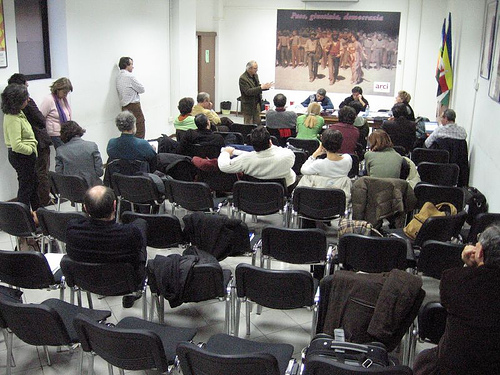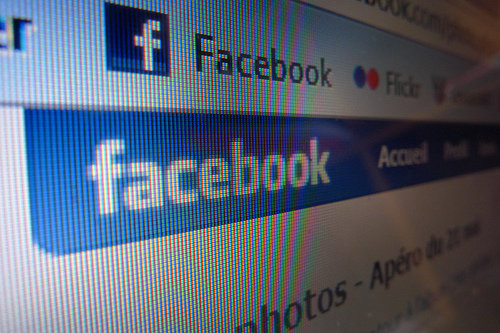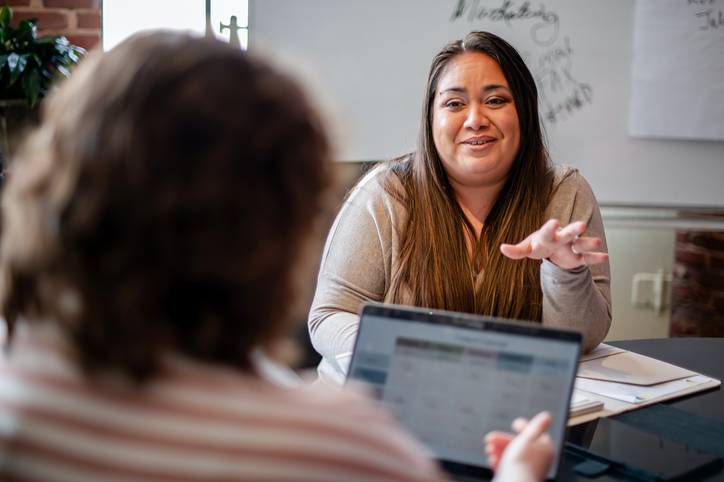Leveraging Participatory Culture in Cybersafety Education (or, the benefits of 'eating one's own dog food') by Kevin Jarrett

{Cross posted on Welcome to NCS-Tech!}
photo credit: jaroslavd Inspiration for this post arrived yesterday morning by way of a message on the bit.listserv.edtech USENET group entitled "Presentations for parents on Internet safety." Some background... The phrase "Eating one's own dog food" is fairly common in American corporate culture. It refers to a company using its own products to show faith and confidence in those products. (I often frame issues I encounter in my new career as an educator using perspectives I gained in the years I spent "working for the man.") As you (the well-informed educator reading this should) know, the "Broadband Data Improvement Act," a.k.a. "Protecting Children in the 21st Century" (S. 1492) amended the Children's Internet Protection Act to require elementary and secondary schools to educate students about appropriate online behavior, including interacting with others via social networking websites and chat rooms and to also address cyberbullying awareness. Parent and community education is considered part of this effort in most districts. Veteran Internet Safety advocate Nancy Willard started the conversation mentioned above with an honest question as she was preparing a parent presentation on the topic. Joe Frost, Director of Technology & Operations at Phoenix Christian Unified Schools, pondering "yet another" Powerpoint-based cybersafety presentation (I'm sure he meant no offense, Nancy!) offered this insight:
"If we wouldn't teach science without the lab or literature without the novel, then why don't we actually use the internet to teach Internet Safety - safely online!"
Then, WHAM! It hit me... Why not use Facebook to teach and explore Internet Safety?photo credit: Kevin N. Murphy You probably think I'm crazy. Am I right? Here's the thing - I'm not talking about using Facebook IN SCHOOL! A forward-thinking school could create an officially-sanctioned, district-facilitated Facebook group and engage the entire COMMUNITY - including STUDENTS - in an honest, real, meaningful CONVERSATION on the topic. Outside school walls, outside school hours. Asynchronously. Whenever it's convenient. Don't get me wrong; what I'm envisioning COMPLEMENTS what schools are already doing in the classroom on Internet Safety, including rocking the http://cybersmart.org/ curriculum (my personal fave); or your basic cool computer lab projects on the topic; or having kids spend time exploring great websites like Netmartz Kids or MTV's newly launched and excellent A Thin Line (best for upper middle and high school). Heck, even good old fashioned classroom discussions on the subject are important. We should definitely keep doing what we're already doing, especially with the younger kids, like the ones *I* teach (grades K-4). There's only one problem...

photo credit: ewen and donabel

ITS NOT GOING TO BE ENOUGH. Let's be honest ... if your school is doing the activities I just described, that's awesome. Chances are, you don't have tons of free instructional time to cram any MORE INTERNET SAFETY CURRICULUM in. What subject are you going to displace to make room? Math? Science? Social Studies? Art? Physical Education? Music? Technology? (Hey! I've got stuff to teach, too!) No, the final frontier for learning is kids' time outside of school. And though I'm not a big fan of crushing amounts of homework, the good folks at the Kaiser Foundation are telling us that kids are spending 7.5 hours per day consuming media. So, why not get in on that action? Why not meet them where they live? Why not leverage the tools they're already using - including Facebook - for the greater good, respecting and honoring their voice in the process? I'll get back to the kids in a moment, but I want to turn my attention now to PARENTS.
Tools and ideas to transform education. Sign up below.

The picture above isn't a PTO meeting but it still provides the visual context I'm looking for. A few adults, listening to other adults provide information. Imagine this is a community meeting on cybersafety. With the right amount of promotion, such an event might attract 20, 30, or more people ... but in my experience ... it'll probably be less. Even so, let's assume the presentation is excellent - full of great ideas, helpful hints, resources to be referred to later. Great discussion and audience engagement. A success, by all accounts. What happens after it's all over? A loud round of applause, people pick up some handouts, maybe sign up for an email list for additional information, or promise to visit the district's website or e-safety clearinghouse with even more information, downloadable resources, and the like. Heck, maybe they'll even talk with their kids about what they learned!
photo credit: -mrsraggle-

Yes, but - does anyone think behaviors will change - substantively - as a result of that meeting? Sorry, but I don't. That's the problem I have with these kinds of sessions. Even if they are well run, positively received and sincerely appreciated. Even if that's the case - they typically DON'T include student voice, AREN'T scalable, DON'T reach the people they need to and take HOURS UPON HOURS of time to prepare and execute. Meh. They pale in comparison to what I have in mind...

Everyone knows Facebook is growing rapidly. According to iStrategyLabs, adults age 35-54 are Facebook's second fastest growing user demographic (only 55+ is growing faster). While some argue that this onslaught of adults is the death knell for participation by teens and young adults, I don't agree. I think that Facebook's value proposition is stronger than ever with teens, particularly as they learn how to secure their profiles and keep unwanted people from accessing them. (Hey wait a minute - isn't that one of the things we've been advising kids to do all along? Maybe they ARE listening!) So if Facebook is the platform, what is the specific application? Simple: the ever-present, omnipotent Facebook group. Here's one I mocked up (because I've never built one before):
Let's take a look at the components of a group. There's a member listing (and member/privacy controls). The wall is great for for quick posts and information sharing. A discussion forum can house threaded conversations. There's even the ability to add photos, videos. Finally, an 'events' tab allows you to schedule and inform the group about gatherings - either face to face, or, perhaps, using tools like Elluminate, Skype or Oovoo. It's perfect! The best part about a Facebook group for this purpose - INSTANT USER BASE that can grow VIRALLY with only a couple of mouse clicks. I've written before about the challenges we face when creating online communities. One of the biggest is making the space compelling enough for people to remember to visit. Here's the thing - MOST OF OUR TARGET AUDIENCE IS ALREADY ON FACEBOOK - creating a community there makes it EASY for people to participate - it's not another website they have to remember to visit - it's right there!
photo credit: notsogoodphotography

Ok ... so what could go wrong? Where are the holes in this idea? Help me sort 'em out...
- "The district can't control the conversation." True, but why would you WANT to? Isn't the point of having a dialogue to be honest with each other? Granted, moderating heated conversations could get tricky, then there's always the risk that someone could say or do something inappropriate, but isn't that a risk in any online community?
- "We don't want kids and adults, particularly teachers, friending each other." I personally do not have anyone under 18 in any of my networks, and I know the NJEA discourages this as well - but the group itself makes conversation possible without friending. That's the point!
- "Kids might not participate." The Creepy Treehouse effect is real. But if the group were to start with adults FIRST, and grow into something substantial, I know for a fact there are teens who would embrace the group, engage the adults, offer their expertise and advice - and, with enough time and encouragement, other teens could be enticed to join and participate. After all, they're already on Facebook, remember? This is just joining a group, something most kids do effortlessly every day.
Now, what could go RIGHT?
- A group like this could become a powerful, living, breathing clearinghouse of information and opinion, driven by the community, built for the community. We're in a new era, one of communication and contribution, where we are not only consumers but also producers of information. What better way to leverage these new capabilities than to educate each other about this important topic?
- Adults could lead the way, and kids could follow. Initially, this group would likely be best oriented towards adults in the community. Some kids would find their way in right away, and that would be great, but would not necessarily be the focus initially. By educating the adults, and starting meaningful conversations first, we give the kids a chance to see what we're thinking - and to know when it's time for them to step in and set the record straight.
- Once kids find the group and embrace it, the REAL POWER of the medium will become evident. Kids generally don't want to talk to their own parents - especially online or in public - but they'll talk to their friends' parents. And they'll be honest. A group like this would give them the ability to interact in a positive way with these adults - contributing to the conversation - and finding their own voice.

Where do we go from here? Who wants to give this a try? Maybe it should be done outside of the auspices of school - maybe a community organization (PTO/PTA, sports league, or other) might take on the responsibility of starting a group like this? Or maybe just a group of concerned local parents? The journey of a thousand miles begins with the first step, so ... who wants to step up? -kj-
